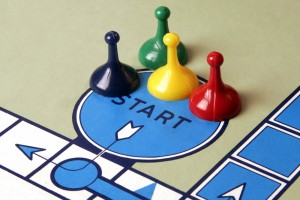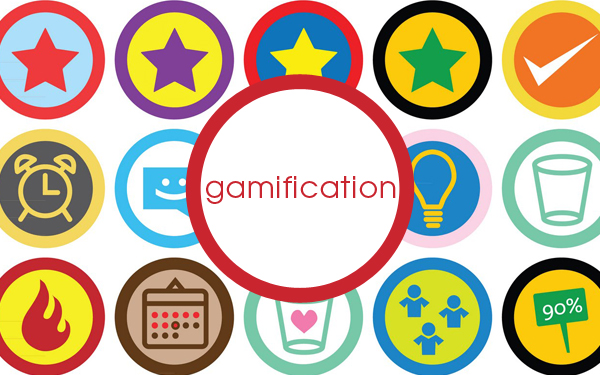Let’s start by clarifying the term “gamification.“ It means introducing gaming dynamics into non-gamin contexts, such as education, health, HR, etc. Each and every game is played because it combines two factors: “wanting“ and “liking.“ These two factors are what bring about increased engagement and intrinsic motivation (on part of game players).
Gamification of existing (business or organizational) processes can provide a reason for a customer to visit a website or a store more often. It could give employees a new way to obtain the feedback they desire on job performance. It could connect customers in a way that makes them feel rewarded and respected for their opinions and support of your business or product. The reason of introducing gamification techniques is of course to increase customer/user/client loyalty to and engagement with the brand as well as obtain new users/customers/clients.
The main psychological theory (of intrinsic motivation) is called Self-Determination Theory (SDT).
What is SDT and what are its elements? Games, according to SDT theory, keep people in intrinsic motivation. There are three intrinsic motivation needs:
- Competence
- Autonomy
- Relatedness
Competence//
This is about meaningful (personal or professional) growth. Good games offer a path to mastery. The more a user plays the game, the better he/she becomes at it There are short-term challenging but achievable goals that lead to success of the overarching long-term goal.
- Advertisement -
The goals have to have to incorporate feedback (from game to gamer or from employee to employer), be transparent (gamer or business professional has to see his/her progress) and clearly outline next steps (aimed at improvement or mastery). Lastly, goals need to imply rewards (for meaningful actions), real or intangible.
Autonomy//
 The game (or a business process) belongs to the user (or a business professional). Choice, control, and personal preference lead to deep engagement and loyalty. There has to be the right feedback for the type of autonomy for a given user. The user has to feel comfortable enough seeing his/her choices, even if the choices are limited to the game design (or business process).
The game (or a business process) belongs to the user (or a business professional). Choice, control, and personal preference lead to deep engagement and loyalty. There has to be the right feedback for the type of autonomy for a given user. The user has to feel comfortable enough seeing his/her choices, even if the choices are limited to the game design (or business process).
To motivate sustained interest the game (or business process) needs to continuously provide opportunities for action.
Relatedness//
Humans are social animals. We like to interact with and are intrinsically motivated to seek meaningful connections with others in our society.
A good game (or a business process) provides meaningful communities of interest. The users (or business professionals) need somehow to be able to value something in the game beyond the mechanics that run the system. The users need recognition for actions that matter to them. And they need to be able to inject their own goals.
It’s also worthwhile to think of non-human relatedness. Dialogues between user interface avatars and humans actually matter and affect motivation. They are a type of relationship. Especially with the advent of iPhones, iPads and such, scripts, text, tones, etc. are becoming increasingly important.
Examples//
Some examples and information to clarify the expounded theory. While gamification is a relatively new trend for businesses, there are already some success as well as failure stories.
International success stories include that of Samsung Nation (technology), Fitocracy (well-being and fitness) as well as MozMed (health and well-being). The latter I co-founded in Mozambique in September 2012.
In MENA region and Egypt, gamification has barely made inroads. A simple but good example seems to be SweetyHeaven (for example, doing homework or help buying groceries), an Egyptian portal that induces kids to do various tasks and earn real-world awards.
At TEDxAUC 2012, my speech was dedicated to gamification and how companies can benefit from it.
Conclusion//
So why gamify a business process? Consider the users and the business cases.
- Research the player (employee/user/customer) profiles of your target (whom you are trying to engage or motivate) audience. What are their motivational drivers and aspirations? Is it more about achievement of enjoyment? Is it more about structure or freedom? Is it more about control of others or connecting with others? Is it more about self-interest or social interest?
- Desired outcomes: What are the tangible and intangible rewards? What outcomes are triggered by user actions vs. schedules? How do users see and feel incremental success and failure on the way to the overarching goals of the company/organizations?
- Experiment and fine-tune your gamified processes.
Gartner, Inc. indicates that by 2015, 50% of organizations that manage innovation processes will gamify those processes, and that by 2014 more than 70% of Global 2000 organizations will have at least one gamified application.
Last but not least, the term “gamification” was added to the Oxford Dictionary








